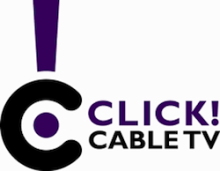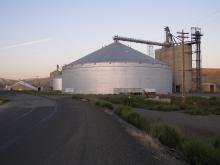
This is Part 2 in a four part series about the Click network in Tacoma, Washington, where city leaders spent most of 2015 considering a plan to lease out all operations of this municipal network to a private company. Part 2 explores the major reasons why Tacoma Public Utilities has considered the move to lease out all Click operations. Part 1, published on May 31, examines possible plans for Click in the immediate future.
Part 2: TPU’s Challenges with Click
When TPU officials proposed last March to lease the network to a private ISP for 40 years, they cited revenue losses for Click as high as $7.6 million annually, indicated by troubling financial reports in recent years. Some critics, however, such as those with the advocacy group “Stick with Click,” countered that this figure is inaccurate. They say that TPU manufactured the revenue losses through an accounting decision that resulted in a deceptively bleak picture of Click’s financial performance.
To shed light on the disagreement, we're examining relevant facts about Click.
Allocating the Costs of a Shared Infrastructure
When Tacoma first built the Click network in the late 1990s, the Hybrid Fiber Coax (HFC) infrastructure was to support services for two divisions of the TPU: TPU Power and Click. Besides the infrastructure’s function for supporting Click’s services, the city designed the HFC infrastructure to support a smart electrical metering program for TPU Power services.
This dual purpose meant that for accounting purposes, TPU had to allocate the costs of a shared network based how much each division would rely on the network. This cost allocation (a common accounting practice) would assign each division a portion of the original capital construction costs for building the network and a separate portion of the network’s ongoing operations and maintenance (O&M) costs.
Ultimately, and with the help of an independent consultant, the city settled on cost allocation ratios in 2003, which determined how the TPU would assign capital and O&M costs to each division. TPU Power would pay 73 percent of the capital costs to build the HFC infrastructure; Click would pay the remaining 27 percent. Click would then pay a 76 percent of the network’s ongoing O&M costs, with TPU Power paying the remaining 24 percent of O&M.
For several years, TPU Power used the HFC infrastructure to facilitate operations of a series of smart meters. But a few years ago, TPU made the decision to follow what they said was a trend in the power industry to instead start using wireless technology for their smart metering needs. This decision, they said, led TPU Power to begin phasing out its use of the HFC infrastructure for their smart metering program.
Now that TPU Power would no longer be using the smart meters, they determined that this change would justify significantly increasing Click’s portion of the allocated O&M costs for the HFC infrastructure. After some dispute over how to fairly adjust the numbers, TPU settled on a new cost allocation which raised Click’s portion of the O&M costs from 76 percent to 94 percent.
Is the Updated Cost Allocation Justified?
Using these new cost allocation numbers, TPU reported that the Tacoma Click network was experiencing annual losses of $7.6 million. But some observers in Tacoma were skeptical of TPU’s cost allocation decision and loss figures. For instance, an accountant for a Tacoma-based tech company suggested a view expressed by many others in town that the TPU has not been sufficiently transparent about the nature and causes of Click's reported financial problems.
Others note that if Click had simply kept the original cost allocation structure unchanged, Click’s current reported annual operating losses would sit at a more modest $700,000 rather than the $7.6 million figure.
Justin Marlowe, a professor of public finance at the University of Washington, told the Tacoma News Tribune that cost allocation decisions by government agencies like this are always based on somewhat subjective criteria:
“Cost allocation for internal budgeting and cost analysis purposes is really the Wild West,” he said. "There is very little in the way of national standards. It’s nothing like financial accounting, where there are very strict rules about general accounting principles.”

Regardless, TPU officials believe that TPU Power has paid its fair share of costs for building and using the network and that the new cost allocation for the two divisions is justified. For one, TPU Power retained responsibility for paying its full, originally established 73 percent share of the $86 million capital costs for building the network. TPU Power also paid the portion of the O&M costs originially agreed upon during the period they were using the infrastructure for their smart meters. Now that TPU Power no longer uses the network for the smart meters, utility leadership sees the adjusted cost allocation as a natural result of these changes.
But supporters of the plan to keep Click believe TPU’s adjustment of O&M costs represents a broken agreement by TPU, a failure to follow the originally established financial conditions for building and then operating and maintaining the network. Moreover, Click supporters believe that the locally owned municipal network offers economic and other benefits to the city that TPU is failing to recognize.
Claims of Mounting Financial Challenges
When TPU’s constructed its HFC network in 1997, it provided speed, capacity, and reliability that far exceeded the standards in the telecommunications industry of the time. The only private competitor in Tacoma was TCI Communications and they offered inadequate Internet and cable TV services. Click’s arrival not only improved the quality of local connectivity, it also helped attract businesses to the community as part of a highly successful city revitalization effort in the late 1990s and early 2000s.
In 2001, a couple of years after Click got off the ground, Comcast bought TCI and in 2008, Comcast upgraded their telecommunications infrastructure to a DOCSIS 3.0 network throughout the city. One report said that this upgrade enabled Comcast to start providing more affordable prices than Click at each speed tier for Internet service in Tacoma. And yet a more recent 2014 report says that Click’s service prices would continue to be below or the same as Comcast’s local prices, suggesting that reports of better prices from Comcast in Tacoma may have been based on temporary bait and switch promotional rates that Comcast is known to use to attract new customers. Still, the reality is that many Tacoma residents have at times at least had the perception that Comcast has offered the best prices for service in Tacoma.
Comcast also has the advantage of being able to provide bundled triple-play services -- Internet, cable TV, and phone. With Click’s business model, however, Click serves as retail provider of Cable TV services while providing only wholesale Internet access and phone services through a group of private ISPs. This divided model prevents Click from offering triple-play packages. Some in Tacoma believe that Click’s inability to offer a triple play option has been a major barrier in Click’s efforts to increase their take rate.
Comcast’s extraordinary market power gives them another advantage. The conglomerate has had unparalleled leverage to negotiate rates on programming costs that are as much as 20 percent less than what Click pays. Because Comcast has the luxury of being able to use revenues from other markets to cross-subsidize their services in Tacoma, this makes it easier for them to offer low rates and deep promotional offers to compete with or even at times undercut Click’s prices. These are all indications that the company has an unfair competitive advantage in a marketplace with a very high concentration of ownership.
Finally, as the slide below from a recent TPU presentation shows, TPU’s original 1997 projections for expected cable TV subscriptions never reached projected rates. And in 2010, Click had to increase their subscription prices after programming costs started increasing at about five times the rate of inflation, far outstripping TPU’s original projections. Overall, it’s clear that factors on the declining Cable TV side of Click’s business have been a major source of the network’s struggles.
Figure from TPU Presentation Illustrating Click’s Actual Performance Vs. Projections
This slide from a recent TPU presentation shows that Click's Cable TV division has underperformed while seeing higher than expected programming costs. It also shows, however, that their ISP business is exceeding expectations.
A Look Ahead to the Future of Click
Comcast’s built-in competitive advantages in Tacoma have likely hampered Click’s capacity to grow a larger customer base. The above slide also tells another story: one of recent strong growth on the Internet side of the business, growth that has allowed Click’s Internet services to exceed TPU's original projections. As we discuss in Part 3, this trend suggests that Click can expect to see continued growth in its core future function as an ISP.

Photo Credit: Dean J. Koepfler, Tacoma News Tribune Staff Photographer, through Creative Commons







